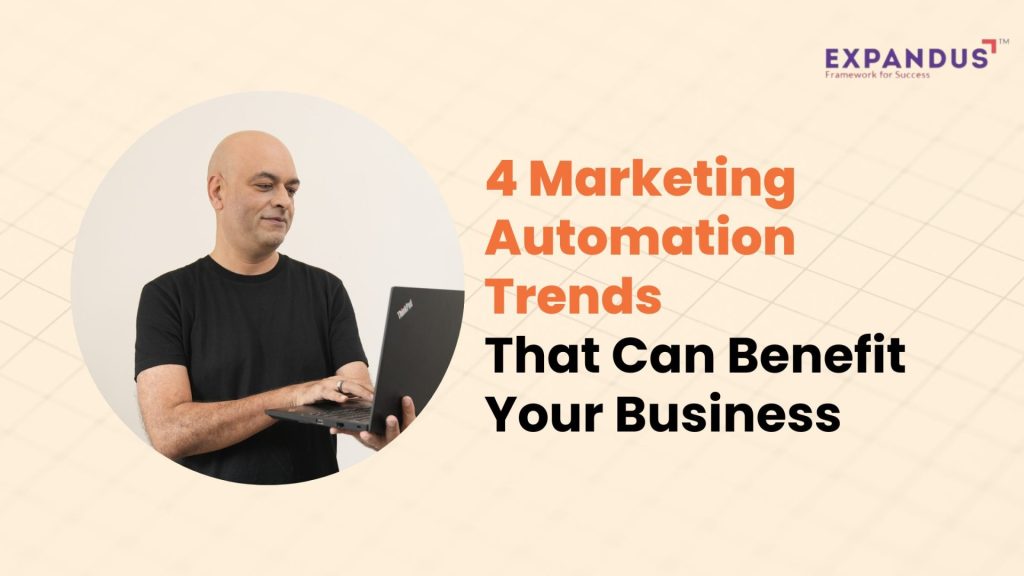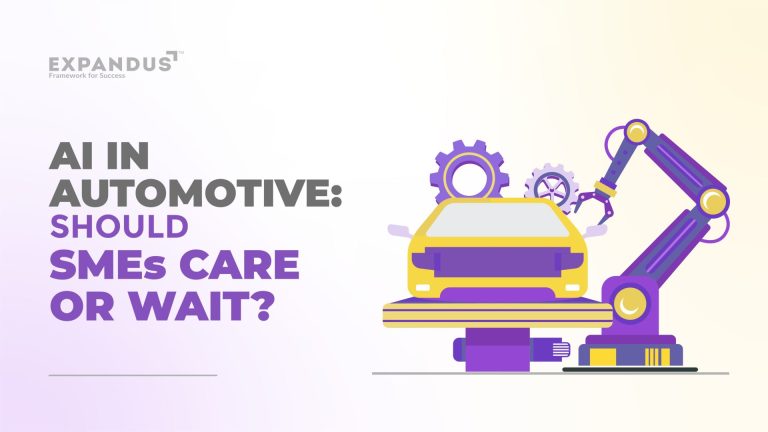4 Marketing Automation Trends That Can Benefit Your Business
Marketing automation is a big help for businesses that want to improve their marketing and get better results. It makes complicated tasks easier, so companies can grow and give customers a better experience. By automating repetitive tasks, businesses can spend more time on strategy and creative ideas. This technology also allows for personalized recommendations, making each customer feel special. Plus, B2B marketing automation improves the ROI of marketing campaigns by making them more efficient.
It’s important to keep up with the latest marketing automation trends to stay competitive. These trends use new technologies to make marketing strategies better. From advanced data analysis to AI-driven personalization, current trends in marketing automation are changing how companies connect with their customers. By following these trends, your business can improve its marketing and build stronger customer relationships.
Here are four key marketing automation trends that can benefit your business. These trends will help you stay ahead and make your Marketing ROI analysis more effective.
Integration of Artificial Intelligence (AI)
Artificial Intelligence (AI) is becoming a big part of marketing automation. It helps businesses make smarter decisions and connect better with customers. In this section, we will explain what AI in marketing automation is, discuss how it helps in creating personalized customer interactions, and look at some examples of businesses successfully using AI.
Explanation of AI in Marketing Automation
AI in marketing automation means using smart technology to handle tasks that used to be done by humans. For example, AI can analyze huge amounts of data quickly, find patterns, and make predictions. This helps businesses understand their customers better and tailor their marketing efforts accordingly. AI tools can also automate tasks like sending emails, personalizing content, and managing social media posts. By doing these tasks more efficiently, AI saves time and helps marketers focus on Marketing ROI analysis.
Benefits of AI-Driven Automation for Personalized Customer Interactions
AI-driven automation offers many benefits for personalized customer interactions:
- Better Understanding of Customers: AI can analyze customer behavior and preferences, helping businesses understand what customers like and need.
- Personalized Recommendations: With AI, businesses can provide personalized recommendations to customers, making them feel special and more likely to make a purchase.
- Improved Customer Service: AI-powered chatbots can answer customer questions instantly, providing quick and accurate responses, which improves customer satisfaction.
- Efficient Campaigns: AI can optimize marketing campaigns by targeting the right audience with the right message at the right time, increasing the chances of success.
Examples of Businesses Successfully Leveraging AI in Marketing
Many businesses are successfully using AI in their marketing efforts. Here are a few examples:
- Amazon: Amazon uses AI to recommend products to customers based on their past purchases and browsing history. This personalized approach has significantly increased their sales.
- Netflix: Netflix uses AI to suggest shows and movies to its users based on their viewing habits. This keeps customers engaged and coming back for more.
- Spotify: Spotify uses AI to create personalized playlists for its users. By analyzing listening habits, it recommends songs that users are likely to enjoy, enhancing their experience.
- Sephora: Sephora uses AI-powered chatbots to help customers find the right beauty products. The chatbots provide personalized recommendations and email marketing automation. It answers customer queries, making shopping easier and more enjoyable.
In conclusion, integrating AI into marketing automation can greatly benefit businesses by making customer interactions more personalized and efficient. By understanding and leveraging AI, companies can improve their marketing efforts and achieve better results.
Advanced Personalization
Advanced personalization is about making each customer’s experience special and unique. It has moved from simple customer segmentation to smart technology to better understand each customer. Let’s see how this change happened and how data helps in understanding what customers like.
Evolution from Basic Segmentation to Advanced Personalization
Basic Segmentation: In the past, businesses used Customer segmentation in simple ways. They put people into categories based on age, location, or gender. For example, they might send the same email to all women aged 25-35.
Advanced Personalization: Now, businesses can create unique experiences for each customer using technology. They look at what products a person views, what they buy, and how they interact with emails and websites. This means customers get offers and recommendations that are more relevant to them, making them feel special and understood.
The Role of Data Analytics in Understanding Customer Behaviors
Data Analytics: This means looking at lots of data to find patterns and insights. For businesses, it means seeing what customers do, like what they click on, what they buy, and how often they visit the website.
Understanding Customer Behaviors: By using data analytics, businesses learn what customers like and don’t like. For example, if a customer often looks at sports shoes but never buys them, the business might offer a discount on those shoes. Data analytics helps businesses guess what customers might want next and give them personalized recommendations, making their shopping experience better.
In short, advanced personalization and data analytics make sure each customer feels unique and valued. This leads to happier customers and better business results.
Use of Chatbots and Virtual Assistants
Chatbots and virtual assistants are programs that talk to customers in real-time. They can be found on websites, social media, and messaging apps. Businesses use them to answer common questions, help customers find products, and even make purchases. For example, if you visit a clothing website and need help finding a shirt, a chatbot can show you where to look or suggest options. This helps businesses provide fast service, making customers happy and boosting sales.
Marketing Automation Trends that Improve Interaction Quality
Chatbots and virtual assistants have gotten a lot smarter over time. Early chatbots could only handle simple tasks and often gave repetitive or wrong answers. Now, new technology like artificial intelligence (AI) and natural language processing (NLP) makes them much better at understanding and answering customer questions. These improvements help chatbots understand complex questions, remember past conversations, and give more personalized and accurate answers. This makes talking to a chatbot feel more natural and helpful, just like talking to a real person.
Examples of Effective Chatbot Integrations in Various Industries
Different types of businesses use chatbots and virtual assistants in special ways to make customer service better. For example:
- Retail: Online stores use chatbots to help customers find products, check order status, and give personalized suggestions.
- Healthcare: Medical websites use virtual assistants and Email marketing automation to answer health questions, book appointments, and give information about services.
- Banking: Banks use chatbots to help customers check account balances, transfer money, and answer common banking questions.
- Travel: Travel agencies and airlines use virtual assistants to help customers book flights, find travel deals, and get real-time updates on flight status.
These examples show how chatbots and virtual assistants can be used in different ways to make customer interactions easier and faster.
Predictive Analytics
Predictive analytics is a helpful tool that uses past data to guess what customers will do in the future. This helps businesses make better decisions and plan well.
Explanation of Predictive Analytics
Predictive analytics looks at old data to make smart guesses about what will happen next. It finds patterns in what customers do. For example, if a customer often buys a type of product, predictive analytics can guess they will buy similar products in the future. This helps businesses know what to sell to each customer.
How Predictive Models Can Forecast Customer Behaviors and Purchasing Patterns
Predictive models look at customer data to predict what customers might buy and when. These models can figure out which customers will buy a product, when they will buy it, and why. For example, if a customer likes to buy during sales, the model can guess they will buy again during the next sale. This helps businesses send special offers to these customers to make more sales.
Insights from Businesses That Have Gained from Predictive Analytics
Many businesses use predictive analytics to do better. For example, an online store might use predictive analytics to suggest products to customers based on what they have bought before. This makes customers happy and increases sales. Another example is a subscription service that uses predictive analytics to find customers who might cancel. They can offer these customers special deals to keep them from leaving. These examples show how predictive analytics helps businesses understand their customers, make smart decisions, and do better overall.
In conclusion, predictive analytics is a useful trend in marketing that can help your business. By understanding what customers need and want, you can make better marketing plans and get better results.
If you need help with predictive analytics, book a session with our experts at EXpandUs Business Coaching.
Wrapping It UP
In conclusion, using the latest marketing tools can really help your business. Adding chatbots and virtual assistants can make customer interactions better and provide support all day and night. Predictive analytics helps you understand and guess what customers might do next, so you can plan your marketing better. Personalized email marketing makes sure your messages fit each customer, which increases engagement and sales. Social media automation helps you manage your online presence easily and stay connected with your audience.
Keeping up with these trends and using them in your marketing can make your business run smoother, keep customers happy, and help you grow. Use these tools to stay competitive and succeed.










